PDFs and digital signatures have provided a secure way to electronically sign and authenticate documents. PDF allows users to easily sign documents digitally. However, one aspect of digital signature is PDF signature validation. It involves validating the signature to verify the signer and the signed content.
If you're looking for how to validate a signature in a PDF or are unable to verify a PDF signature, this is the ultimate guide for you. In this article, we'll cover everything about PDF signature validation and explain the entire process. Additionally, we’ll introduce a comprehensive PDF editor with powerful PDF form creation and signing features. Interested users can click the button below to start a free trial. We'll also recommend an online signing platform, UPDF Sign, that doesn't require signature validation.
Windows • macOS • iOS • Android 100% secure
Part 1. Why Is My Signature Not Verified in a PDF?
Multiple reasons can prevent your signature from being verified in PDF. Some of the key ones include:
- Expired Certificate: The signature certificate has expired.
- Invalid Certificate: The PDF reader cannot recognize/trust the certificate used to sign the PDF.
- Modified PDF: You have modified the PDF after the signature, which made the signature invalid.
- Missing Root Certificate: The root certificate essential to validate the signature is missing.
- Unsupported Signature Format: The PDF reader may not support the digital signature format used.
If you suspect any of the above reasons, then that's the reason why your signature not verified in PDF Mac/Windows. But don't worry. The next part talks in detail about how to validate signature in PDF.
Part 2. What Is PDF Signature Validation and How Is It Done?
PDF signature validation helps to ensure that the signed contract or document is authentic and signed by the verified signer. Here's everything you need to know about signature validation in PDF.
2.1 What is PDF signature validation?
PDF signature validation is a process of verifying digital signature authenticity. It involves checking the legitimacy of the signature's digital ID certificate status and document integrity.
The validator verifies the signer's certificate or its parent certificates to ensure that they are trusted. The validity of the signing certificate is also checked using the PDF tool settings. Besides that, the validator verifies the document's integrity to check if the signed content was altered after signing. If some changes were made, then the verification validates that the signer approved those changes.
2.2 How to validate signature in PDF?
There are various PDF tools you can use to validate signatures in PDFs. Before exploring these options, let's take a look at UPDF Sign. This online PDF signing platform allows you to easily add certified digital signatures to your PDFs. With UPDF Sign, you can send, sign, and track PDFs anytime, anywhere. Similar to DocuSign, it offers all the essential features needed for PDF signing. Interested users can click the button below to start a free trial.
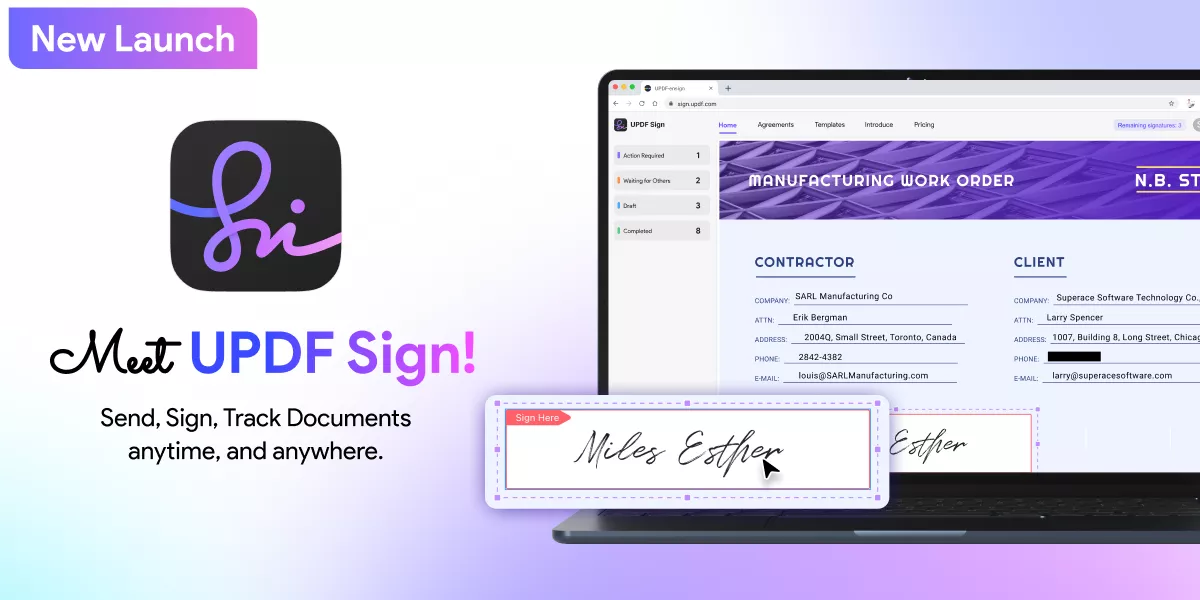
Since Adobe Acrobat DC is a widely-used PDF tool, let's go over the steps to validate a signature in a PDF using Adobe Acrobat DC:
Step 1. Launch Adobe Acrobat DC and open the PDF whose digital signature you want to verify.
Step 2. Click on the digital signature and see its current validity status. If it displays "Validity unknown" or "Signature Not Verified", then right-click the signature and tap "Validate Signature". Adobe Acrobat will perform the validation.
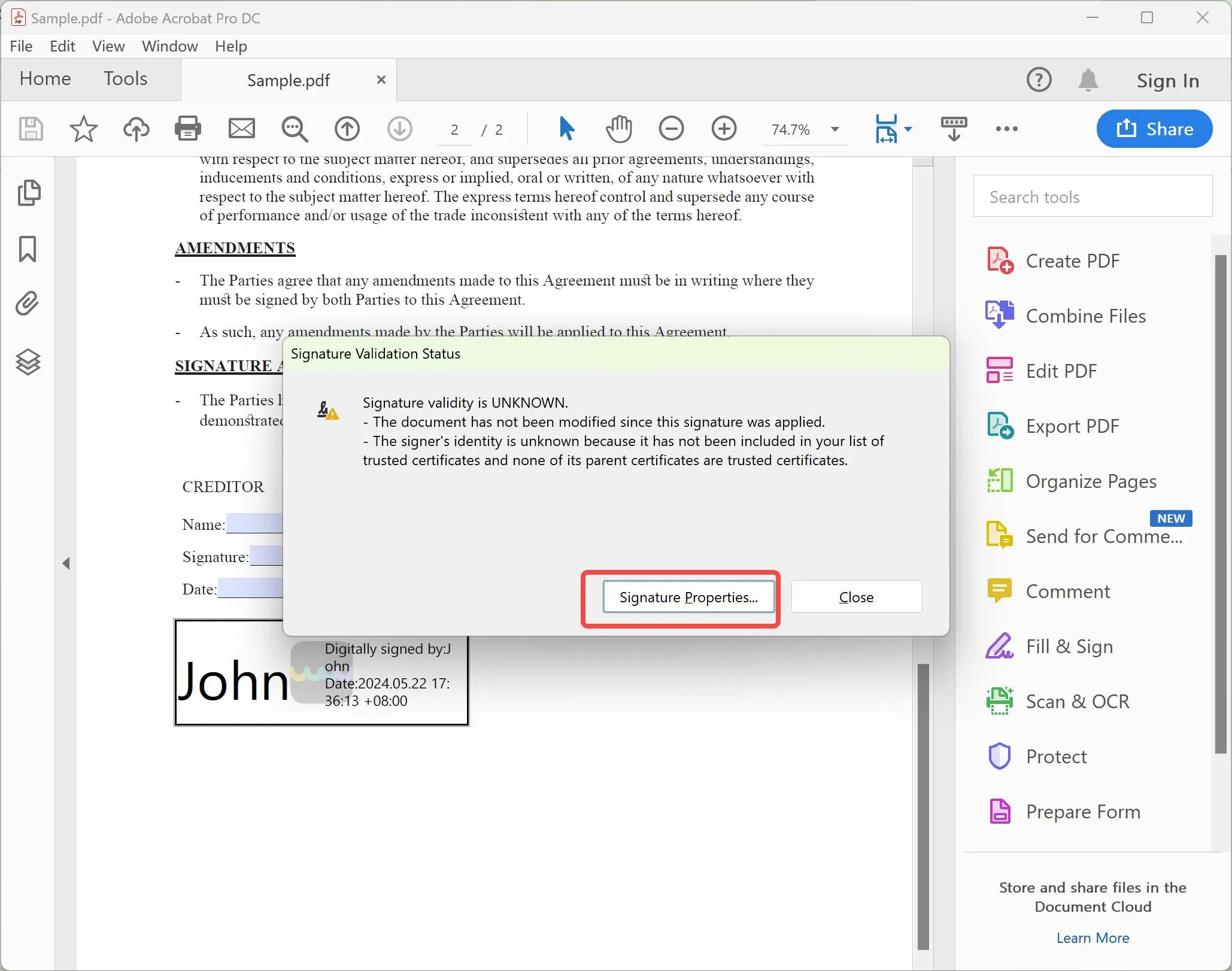
Step 3. From the next window, select "Validate Signature".
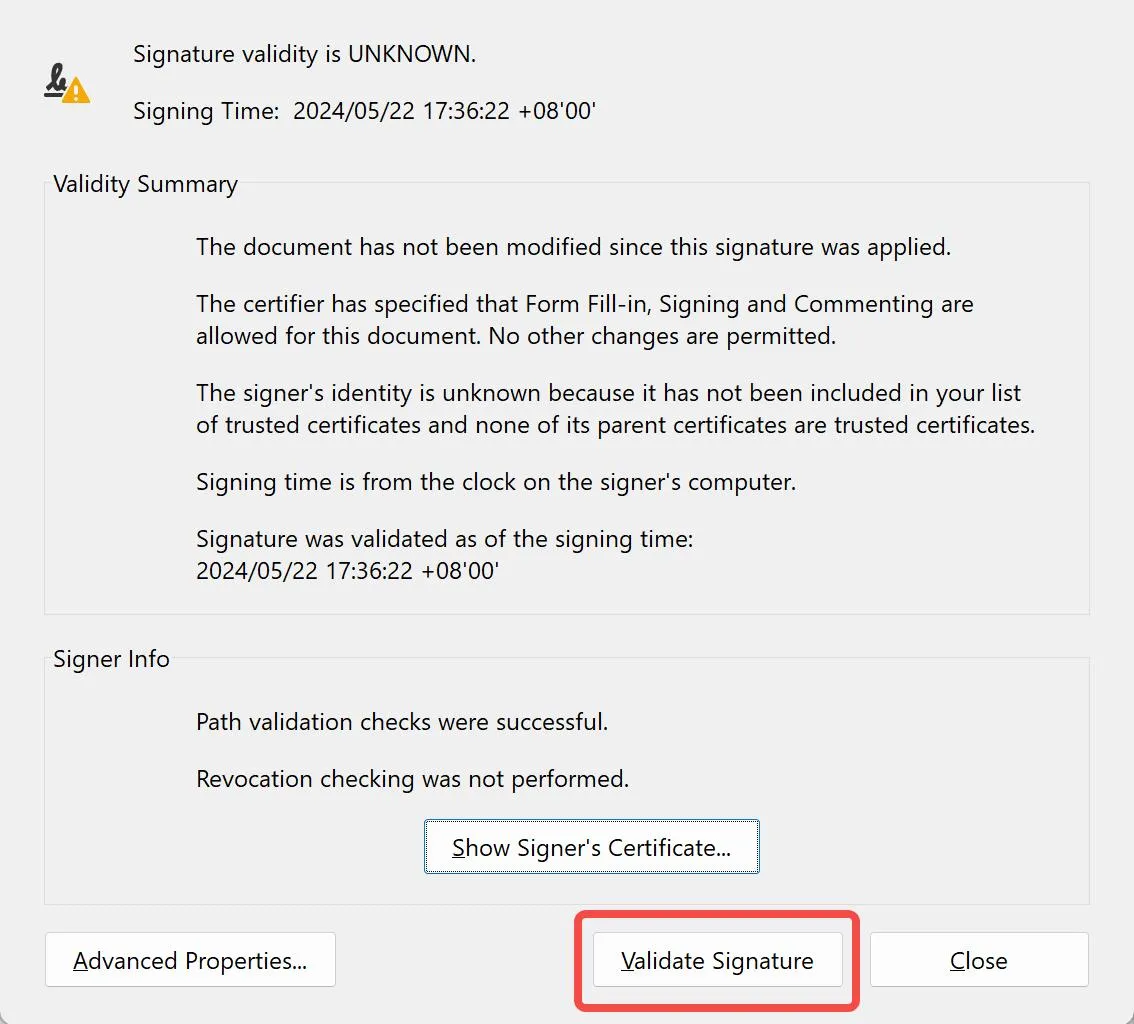
Follow the on-screen prompts to complete signature validation.
If it displays "Validity unknown" even after performing validation, then you can manually validate the signature. For that, follow the below additional steps:
Step 4. Right-click the signature and tap "Show Signature Properties". In the pop-up window, click the "Show Signer's Certificate" from the bottom.
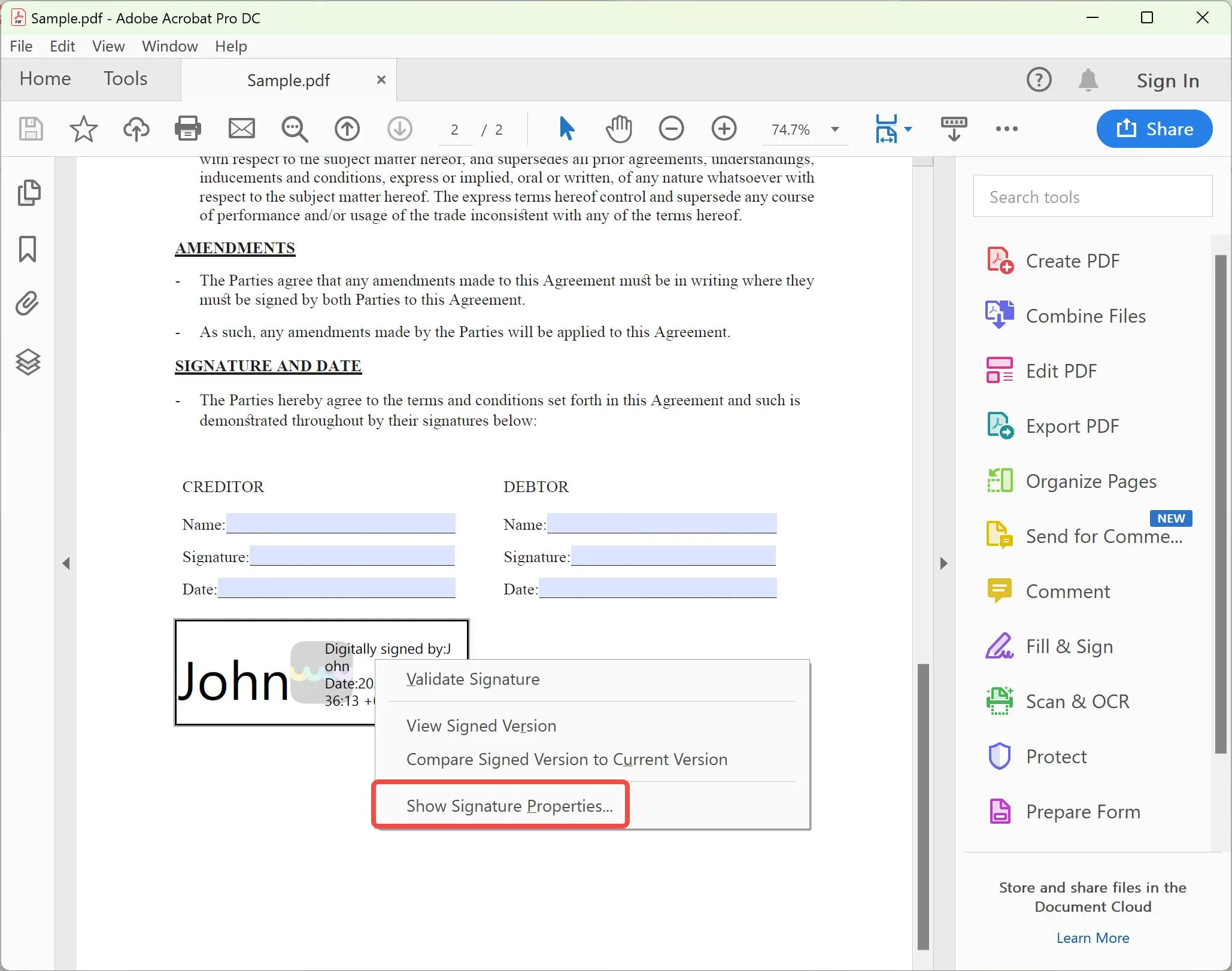
Step 5. Choose "Show Signer's Certificate...".
Step 6. Go to the "Trust" tab. Select the lowest level certificate from the left sidebar and then click the "Add to Trusted Certificates" button.
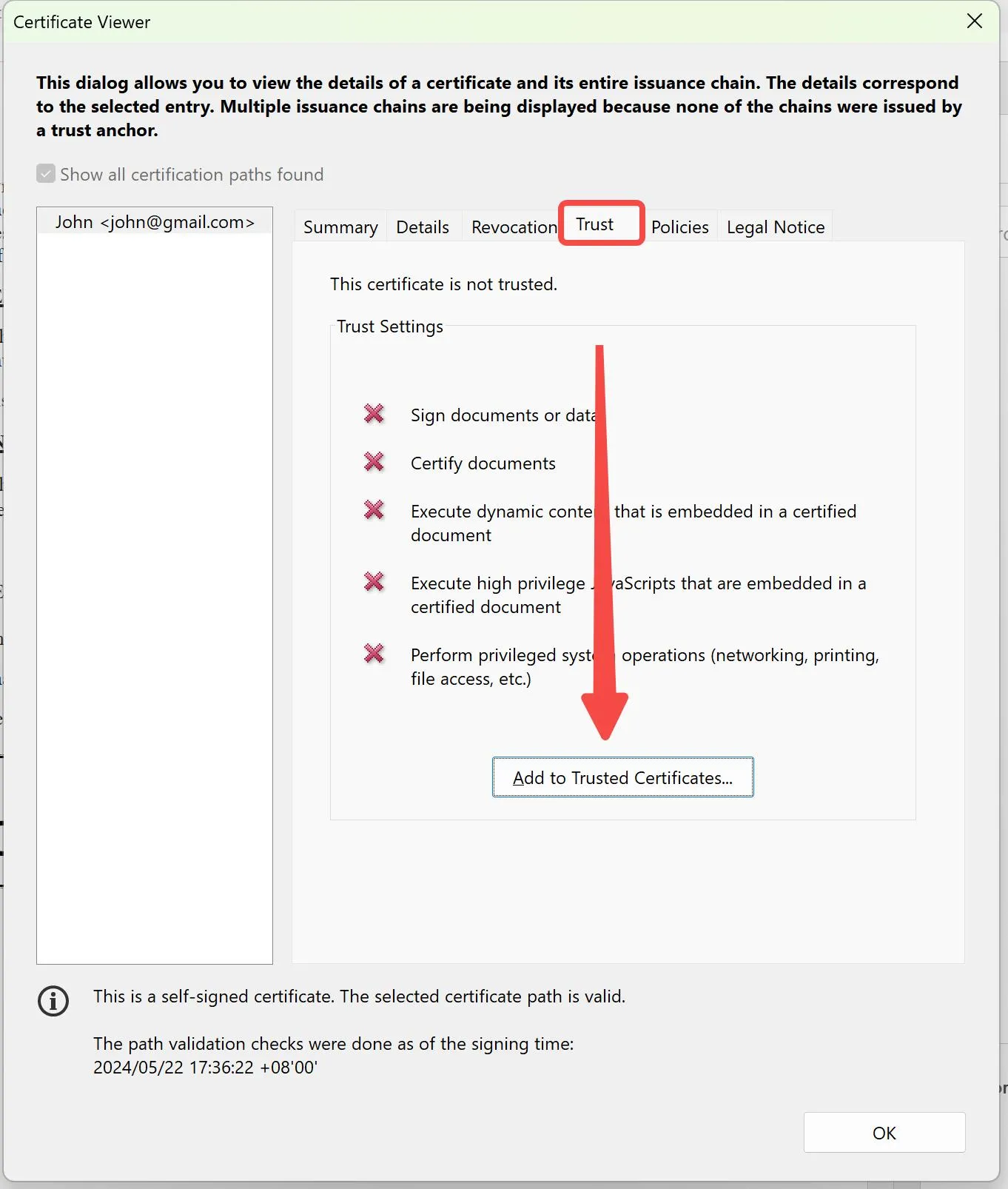
Step 7. You will see the security check. Click "OK" to verify.
Step 8. Tick the "Use this certificate as a trusted root" checkbox and click "OK".
Step 9. In the next window, simply click "OK".
Step 10. Click the "Validate Signature" button. Lastly, click "Close".
Afterward, go back to the digital signature, and you will see that it shows as validated.
This way, you can easily use Adobe Acrobat DC to validate signature in PDF documents. From now on, all the PDF documents you send should show the above image.
There also come scenarios when the digital signature is missing a certificate, or you may want to update its certificate. For that, you can use UPDF, an intuitive tool to import the license and install it under the trusted path. Here's how to do it:
Step 1. Install and launch UPDF and open the PDF.
Step 2. Double-click the digital signature and tap "Signature Properties".
Step 3. Click "Show Certificate".
Step 4. Click the "Install Certificate" button.
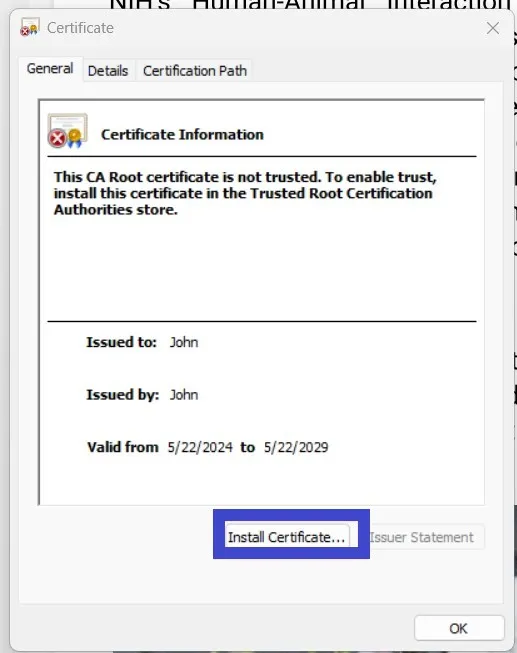
Step 5. Follow the on-screen instructions to import the certificate.
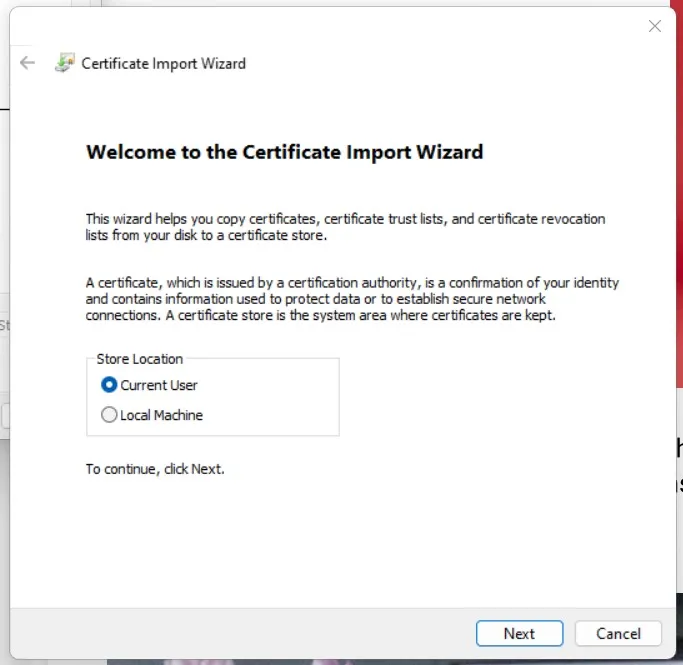
That's it! This way, you can quickly import the certificate into an existing digital signature with UPDF. So, hit the download button below to get UPDF and quickly update your digital signature.
Windows • macOS • iOS • Android 100% secure
Part 3. The Best PDF Tool to Sign and Handle Other PDF Activities
Now that you have mastered the art of PDF signature validation, let's make you more proficient in handling PDFs by recommending a powerful PDF tool.
UPDF is a modernized and feature-rich PDF signer and editor tool that is one of the dominating tools in the PDF tools market. UPDF offers an intuitive and advanced interface to handle almost all PDF-related activities. What you can get with UPDF are as follows:
- PDF Signing: It allows you to add both digital and handwritten signatures in the PDF.
- Fill Forms: It lets you fill fillable/non-fillable PDF forms and sign electronically.
- Edit PDF: It helps edit PDF content, such as text, images, links, background, etc.
- Annotate PDF: It assists in annotating a PDF, such as highlighting, underling, marking, strikethrough, or adding stamps/stickers.
- Convert PDF: It can convert a PDF file into other formats, such as image, Word, PPT, Excel, RTF, CSV, text, and more.
- Batch PDF: It can combine, insert, print, convert, and encrypt multiple PDFs simultaneously.
- PDF AI Assistant: It integrates PDF AI assistant (UPDF AI) to provide PDF summary, translation, and explanation with an AI bot.
- Compress PDF: It can compress PDF file size for easy handling.
- OCR PDF: It can perform an OCR scan to get editable PDFs from scanned PDFs.
- Protect PDF: It can protect a PDF with a password and also redact sensitive information.
- Cloud Storage: It provides encrypted cloud storage to save PDF files.
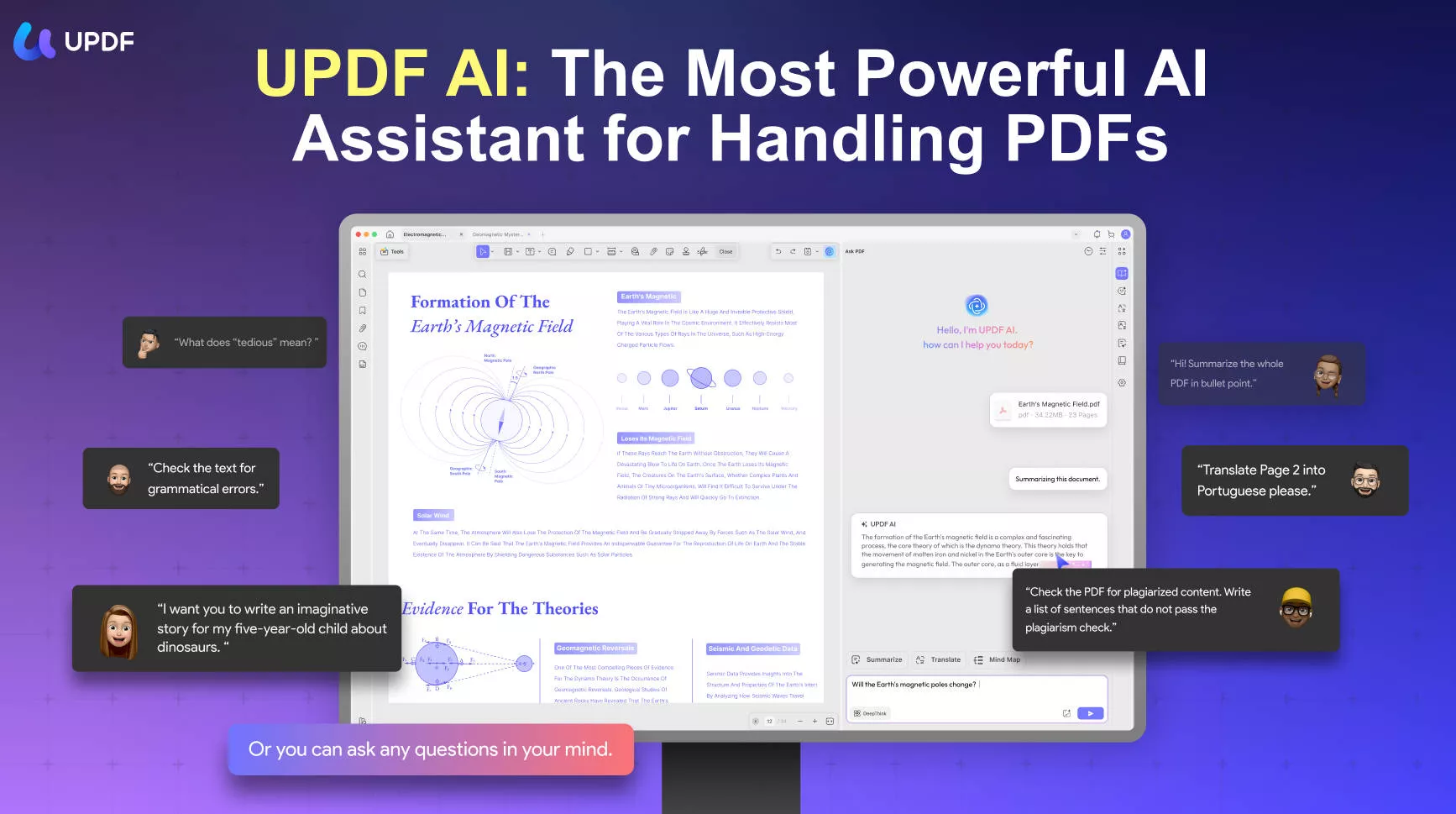
In short, UPDF is an all-in-one PDF tool to read, sign, validate, edit, annotate, and do almost anything with PDFs. So, why miss out on this full-fledged tool? Download UPDF right now and access all the above features with a full free trial.
Windows • macOS • iOS • Android 100% secure
The best part is that UPDF offers discounts to interested users. Check out the link below to grab the opportunity.
Conclusion
PDF signature validation is an important practice for authenticating documents. It ensures that the document is authentic and signed by the verified signer. So, if you are also using a digital signature, follow the above steps to validate the signature in PDF using Adobe Acrobat. Furthermore, if you frequently handle PDFs, then start using UPDF. It offers a one-stop tool to read, sign, edit, annotate, and do almost all activities with PDFs.
 UPDF
UPDF
 UPDF for Windows
UPDF for Windows UPDF for Mac
UPDF for Mac UPDF for iPhone/iPad
UPDF for iPhone/iPad UPDF for Android
UPDF for Android UPDF AI Online
UPDF AI Online UPDF Sign
UPDF Sign Edit PDF
Edit PDF Annotate PDF
Annotate PDF Create PDF
Create PDF PDF Form
PDF Form Edit links
Edit links Convert PDF
Convert PDF OCR
OCR PDF to Word
PDF to Word PDF to Image
PDF to Image PDF to Excel
PDF to Excel Organize PDF
Organize PDF Merge PDF
Merge PDF Split PDF
Split PDF Crop PDF
Crop PDF Rotate PDF
Rotate PDF Protect PDF
Protect PDF Sign PDF
Sign PDF Redact PDF
Redact PDF Sanitize PDF
Sanitize PDF Remove Security
Remove Security Read PDF
Read PDF UPDF Cloud
UPDF Cloud Compress PDF
Compress PDF Print PDF
Print PDF Batch Process
Batch Process About UPDF AI
About UPDF AI UPDF AI Solutions
UPDF AI Solutions AI User Guide
AI User Guide FAQ about UPDF AI
FAQ about UPDF AI Summarize PDF
Summarize PDF Translate PDF
Translate PDF Chat with PDF
Chat with PDF Chat with AI
Chat with AI Chat with image
Chat with image PDF to Mind Map
PDF to Mind Map Explain PDF
Explain PDF Scholar Research
Scholar Research Paper Search
Paper Search AI Proofreader
AI Proofreader AI Writer
AI Writer AI Homework Helper
AI Homework Helper AI Quiz Generator
AI Quiz Generator AI Math Solver
AI Math Solver PDF to Word
PDF to Word PDF to Excel
PDF to Excel PDF to PowerPoint
PDF to PowerPoint User Guide
User Guide UPDF Tricks
UPDF Tricks FAQs
FAQs UPDF Reviews
UPDF Reviews Download Center
Download Center Blog
Blog Newsroom
Newsroom Tech Spec
Tech Spec Updates
Updates UPDF vs. Adobe Acrobat
UPDF vs. Adobe Acrobat UPDF vs. Foxit
UPDF vs. Foxit UPDF vs. PDF Expert
UPDF vs. PDF Expert

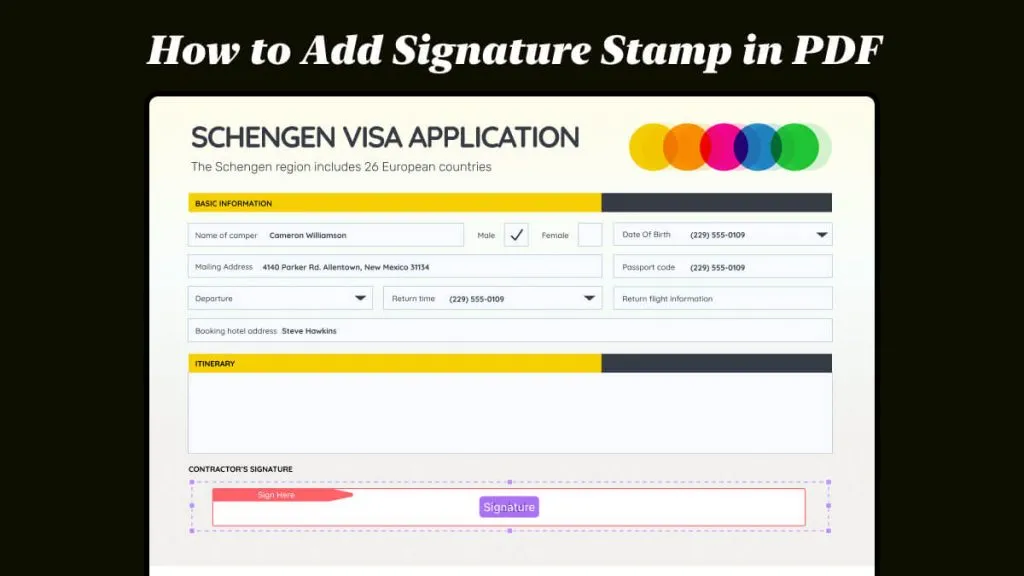
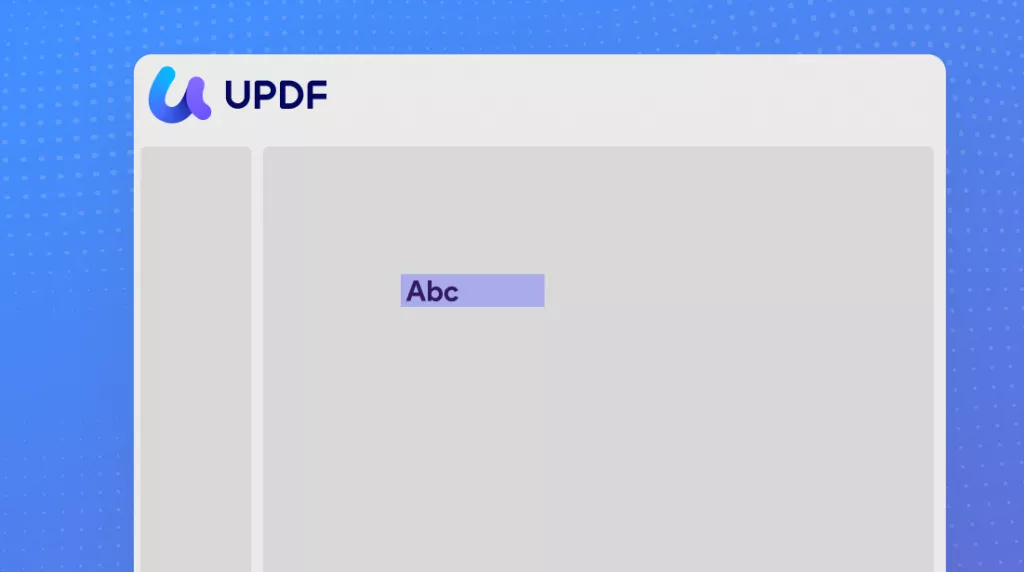

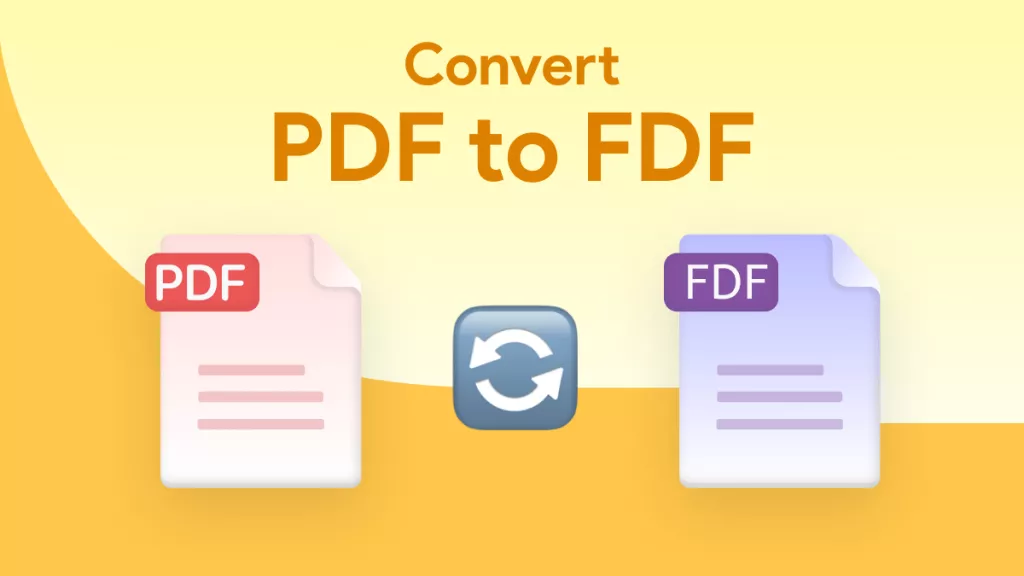


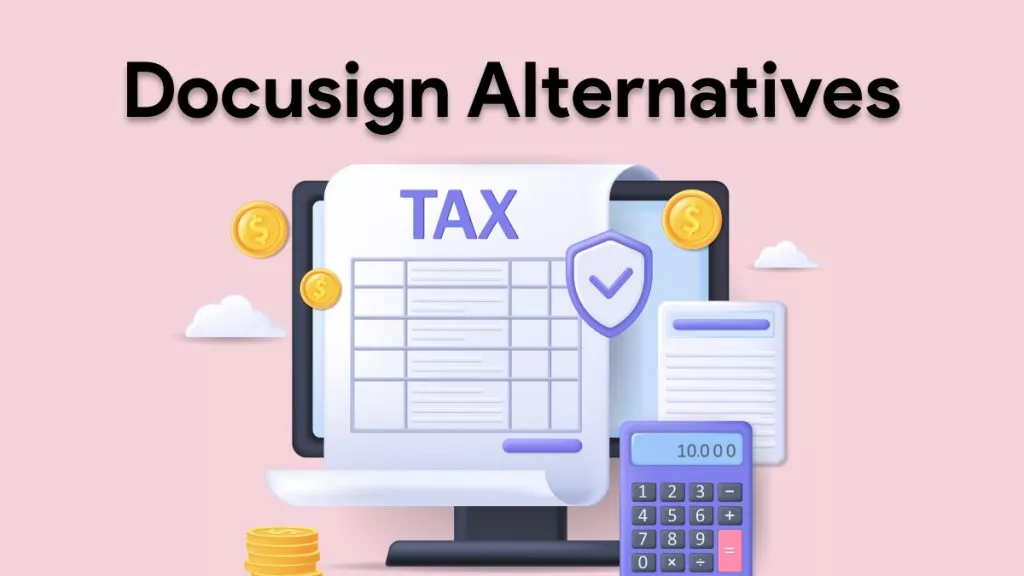
 Engelbert White
Engelbert White 
 Enola Miller
Enola Miller 

